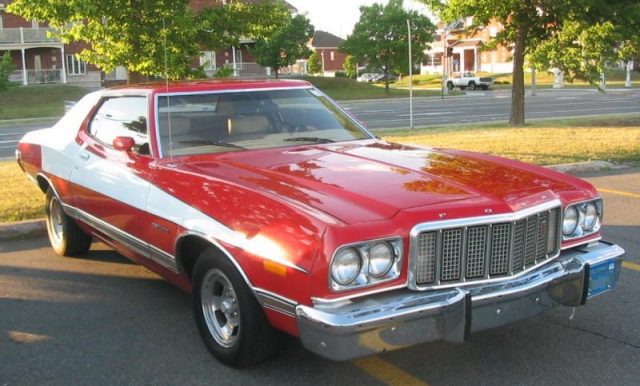Starsky & Hutch was an immensely popular TV series that aired from April 1975 to May 1979. The series followed two detectives, named David Michael Starsky and Kenneth Richard “Hutch” Hutchinson, as they hunted criminals on the neon-lit streets of Bay City, a fictional city in Southern California.
The detectives, who often sought help from their underground network of informants, frequently dressed up as women, gay lovers, and shady characters in order to connect with their suspects and apprehend them. Starsky’s car, a bright red Ford Gran Torino with a large white stripe on both sides, nicknamed the “Striped Tomato,” became one of the icons of the series.
The lead characters of Starsky & Hutch were actually based on real-life policemen named Lou Telano and John Sepe. Telano and Sepe operated on the streets of New York City in the 1960s and 1970s, and were known for their unorthodox undercover work and inventive ways of gathering data on their suspects. At that time, police protocols were not nearly as strict as they are today, so detectives were more free to implement their own methods of investigation. Also, with more than a thousand murders per year, the New York City Police Department encouraged their most skilled detectives to go undercover in hope of lowering the ever-growing crime rate.

Over the years, Telano and Sepe conducted numerous undercover operations and perfected their ways of dressing up to the point where they were completely unrecognizable while tailing their oblivious suspects. They dressed up as gay lovers when they set out to catch a gang of thieves that terrorized gay couples on Coney Island. Many drug traffickers, murderers, rapists, and thieves were stunned when they were tackled by Telano and Sepe disguised as old ladies, clowns, hippies, and even nurses. At one point in the early 1970s, they even disguised themselves as middle-aged Hasidic Jews in order to arrest members of a teenage Hasidic gang who were mugging passers-by on Staten Island. To make sure that their disguises were believable, they contacted an actual Hasidic rabbi who provided them with proper clothes and taught them some Yiddish.
Before the filming of Starsky & Hutch began, the series crew followed Telano and Sepe for almost a year. They accompanied them on their patrols and even filmed them during several raids. The crew made notes on the two detectives’ accents, clothes, and demeanor, and used their real-life experiences to create the script for the series. Telano drove a bright red Gran Torino with white stripes and the two detectives frequently used it for their undercover missions: that car was used as the inspiration for Starsky’s iconic “Striped Tomato.”
However, Telano and Sepe were unaware of the fact that the crew were going to base the premise of the entire series on their antics. They never signed any contract with the producers and allowed the crew to follow them out of sheer good will. When the series premiere aired in 1975, both detectives were shocked to realize that the series was basically a biographical depiction of their real-life work which featured two detectives with character traits that were strikingly similar to their own. They felt conned by Hollywood because some of the actual events which took place during their undercover operations were used as the basis for the series’ plot. Their colleagues even started calling them Starsky and Hutch because everyone immediately noticed the similarities.
Naturally, Telano and Sepe sued Spelling-Goldberg Productions, the company that produced the show, for shamelessly ripping off their biographies without even asking for consent. The company proposed an out-of-court settlement, offering to pay $10,000 to each of the detectives. They both immediately accepted the offer.
However, they never expected the series to become one of the most influential crime series of the 1970s. Since they settled out of court, they couldn’t ask the company for any more money or any royalties, so they bitterly severed all ties with Starsky & Hutch. Telano and Sepe both left the NYPD in the mid-1980s. Sepe opened a video rental shop and retired in the late 1990s, and Telano became the president of the Veteran Police Association. He is still in office.
